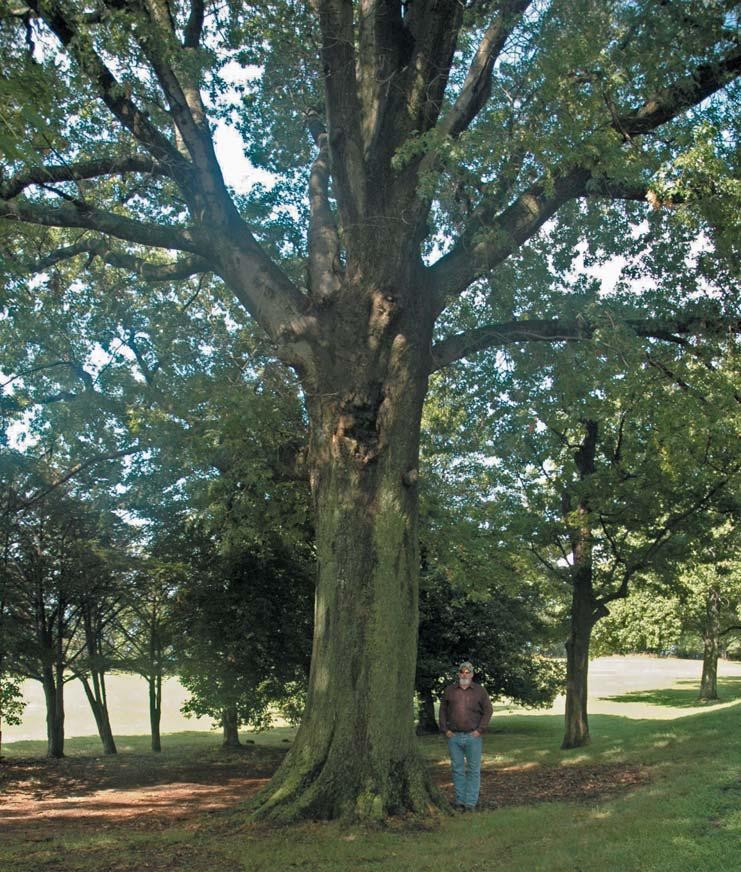ABERDEEN PROVING GROUND, Md. -- Aberdeen Proving Ground, home to many species of plants and wildlife, is also home to six Harford County Champion trees that are part of the Maryland Big Tree Program.
The Maryland Big Tree Program, which was created to raise awareness of tree conservation, was first started in 1925. Each year the list is updated to reflect new trees, re-measured trees and
deceased trees. The Maryland Big Tree Program registers these trees. The goal of the program is to recognize tree owners as good stewards of trees and to educate citizens about the importance of trees. The trees receive points based on their height, girth, and crown.
A Swamp Chestnut Oak, located on Spesuite Island, is the biggest recorded Swamp Chestnut Oak in Harford County and the second biggest recorded tree of its species in the state, with its circumference being more than 19 feet (and 120 feet high). Other big APG trees include a Scarlet Oak, which measures 13 feet, 6 inches in circumference, 100 feet high, and a Baldcypress which measures 13 feet, 4 inches, and 114 feet high.
Scott English, an APG forester who was involved in measuring trees and participated in the nomination process this year, said that conservation of trees is vitally important to the health of the Chesapeake Bay and the animals that live in the watershed. Not only do trees provide oxygen and sequester carbon, forests absorb and trap nitrogen, particulates and other pollutants released into the atmosphere by cars, industries, agriculture and construction. Trees capture
rainfall and help prevent erosion, and protect and filter drinking water for the Bay watershed's residents. Trees also provide a home for many birds, mammals, reptiles and insects.
"APG is the cornerstone of the Chesapeake Bay," English said. "The forests here (on APG) are very critical to the health of the Chesapeake Bay."
English added that the APG forests provide clean water and oxygen for the people who work and live on APG and the surrounding community.
"Based on studies conducted, the trees located on APG provide enough oxygen for the city of Baltimore to live on," English said. "It is also important to remember that these trees play an important role in sustaining and supporting the military mission. We need to protect our
environment to keep the Army mission strong."
English added that APG is committed to urban forestry as part of environmental stewardship. This year APG received the honor of being a Tree City USA community for the fifth year in a row.
APG also received its third Tree City Growth award given to recognize environmental improvement and encourage higher levels of tree care throughout America. Both awards are given through
the Arbor Day Foundation.
This year APG also received the Maryland PLANT Community Award. People Loving and Nurturing Trees is a statewide award program to recognize communities for their tree planting and
tree care effort.
"APG is continuing its proactive forest management and has been recognized through the Arbor Day Foundation for over ten years," English said.
Preserving APG's wildlife and trees is part of the 2009 Army Chesapeake Bay Strategy. The Army Chesapeake Bay Strategy Goals are: contribute to restoring and sustaining the water quality of the Chesapeake Bay and its tributaries; restore and sustain living resources and healthy habitats on Army installations; support the implementation of ecosystem-based fisheries management;
strengthen storm water management practices; and maintain healthy watersheds and foster Chesapeake Bay stewardship.


Social Sharing